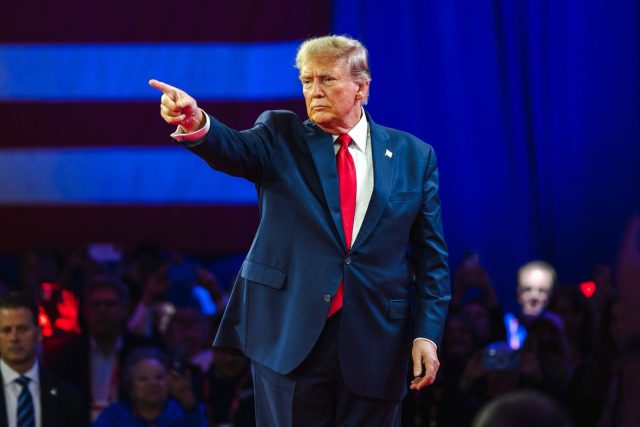
Donald Trump, the current President of the United States, has once again raised his voice. On his social media platform, Truth, he announced plans to introduce 50% tariffs on all goods coming from the European Union starting June 1st. A clear message: enough talk, it’s time to change course in trade relations with Brussels.
Trump accuses the EU of having acted for decades as a structure designed to economically take advantage of the United States. He cites trade barriers, penalizing VAT systems, discriminatory regulations, unjust corporate sanctions, monetary manipulation, and a generally hostile attitude toward large American companies. He points to one figure above all: a trade deficit he claims exceeds $250 billion a year.
But it’s worth pausing here. Official figures from 2023 tell a different story. According to available data, the United States imported about $502 billion in goods from the EU, while exports to Europe totaled $344 billion. The deficit exists, but it’s smaller than Trump asserts. And when services are included—such as digital and tech services—the trade balance becomes even more level: $795 billion versus $743 billion.
That doesn’t mean the President’s criticisms are completely unfounded. The European Union, with its sprawling bureaucracy, often hinders competition and enforces regulations that seem designed to penalize outsiders. And European conservatives—especially in Italy—have long made it clear that this Union, in its current form, does not work.
However, it is our duty to emphasize a truth that cannot be ignored, especially in such a delicate historical moment: Europe is not an enemy. Europe is the United States’ natural ally. And if Trump is determined to defend American national interests—which is entirely legitimate and commendable—he must also remember that now more than ever, the U.S. and EU must walk in the same direction.
Tariffs as a Political Weapon
A 50% tariff is more than a simple trade measure. It’s a declaration of commercial war that risks sparking an uncontrollable spiral. The consequences are already being felt. European stock exchanges lost over €183 billion in a single day. Milan’s Ftse Mib closed down 1.94%, Paris lost 1.65%, Frankfurt fell 1.54%. Only London, protected by a recent bilateral deal with Washington, kept losses to -0.24%.
Wall Street didn’t fare any better: the Dow Jones fell 1.1%, the Nasdaq 1.68%, and the S&P 500 1.15%. The effects are global, impacting both European and American economies. According to estimates, a 50% tariff could cause Italy’s GDP to fall by 0.6%. The EU as a whole might lose 0.7%, Germany 0.8%. But the biggest loser could be the U.S. itself, with a projected decline of 1.5%.
In other words: everyone loses. Including America.
Europe as a Strategic Partner
No one denies that there are frictions and disagreements. But as with siblings, dialogue—even if tough—is the only way forward. We cannot afford structural divisions between the two sides of the Atlantic. Especially now, amid shared global challenges: the threat from China, Middle Eastern instability, the war in Ukraine, energy pressures, and competition with Asia over technology and supply chains.
Trump is absolutely right to want a strong, sovereign, and respected America. But precisely because we are brothers, Europe must be part of a shared vision. Conservatives know this well: it’s time for a reformed European Union—less bureaucratic, more productive, closer to its people. But that cannot be achieved through the blunt force of protectionism. It requires the courage of reform and the clarity of common goals.
The Conservative Path: Strength and Realism
Protectionism can serve, in some cases, as a tactical tool. And Trump is a master at creating pressure to gain concessions. But true leadership—the kind that builds rather than destroys—knows when to turn down the temperature in order to protect what truly matters: the alliance between the West and the United States.
What we need is a common transatlantic vision that strengthens Western industries against Asian giants. We need shared rules for digital affairs, artificial intelligence, and strategic infrastructure. What we need is vision, not just muscle.
Conclusion
Donald Trump has rightly highlighted an imbalance that must be addressed. But now is the time to go one step further: to transform confrontation into cooperation, pressure into alliance. Europe should no longer be viewed as an adversary—it is, and remains, the United States’ key ally in the world.
European conservatives are ready to do their part for a stronger, freer, more just Europe. But the United States must decide whether it wants to walk with us—or against us. The hope is that Trump—a leader of remarkable vision, though sometimes excessive in tone—can find his strategic compass again. Because brothers may argue, but they do not break apart. And today, more than ever, the world needs a united West.



 Subscribe
Subscribe